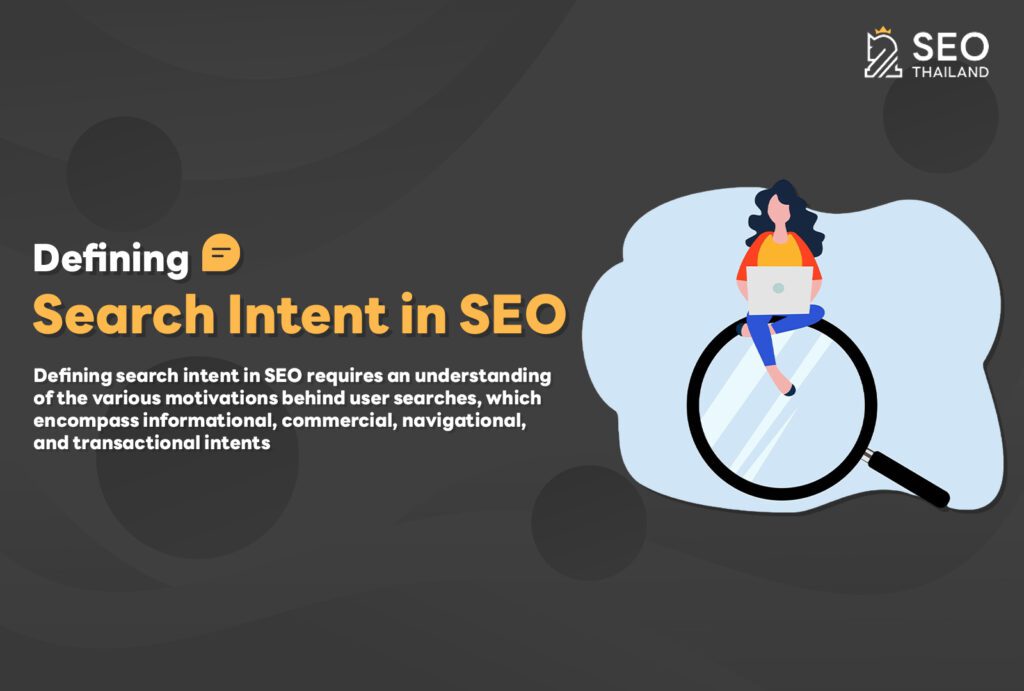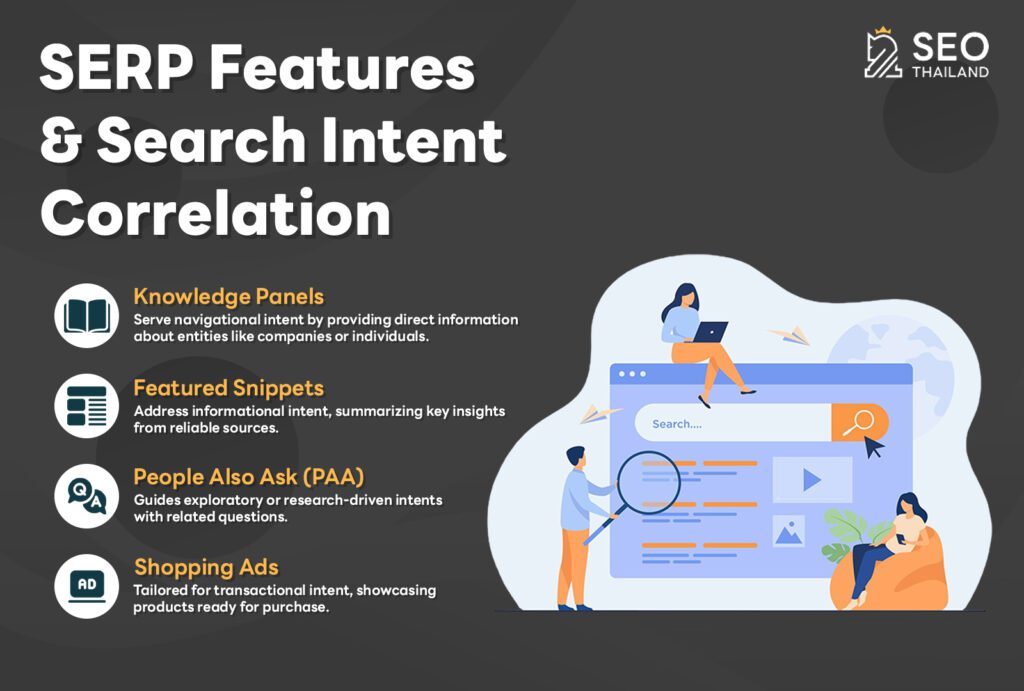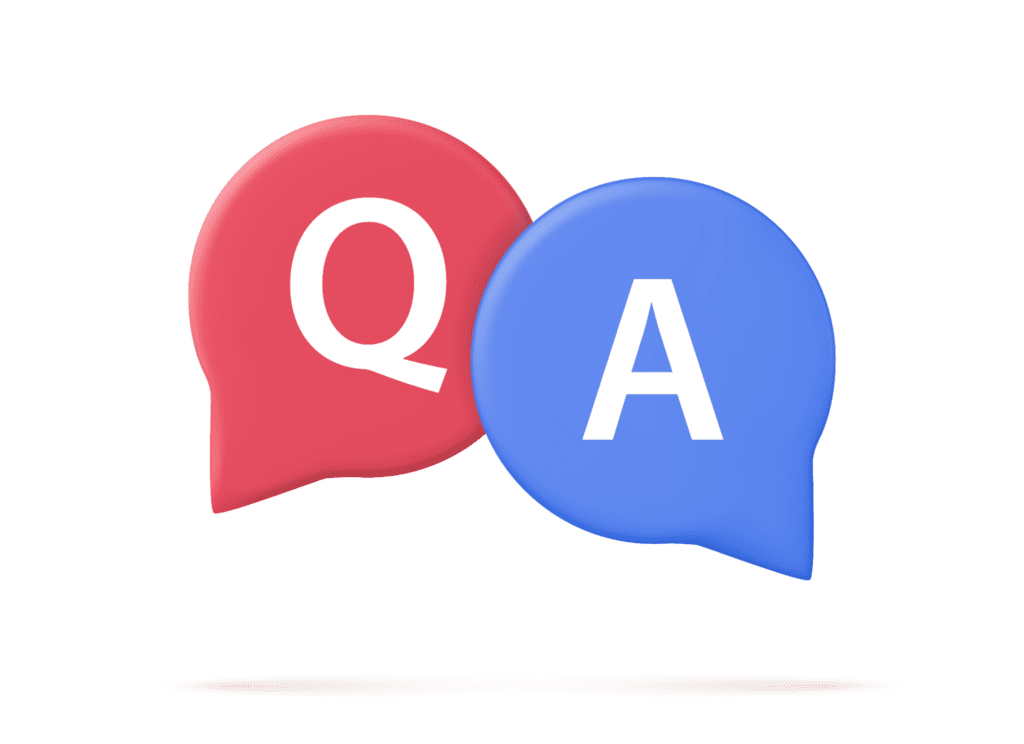You will find a breakdown of the different types of search intent—informational, transactional, and navigational—and strategies for aligning your content with user needs. By optimizing for search intent, you can drive more relevant traffic and improve your site’s overall performance.
Engage with the content to learn how to implement these strategies effectively.
Key Takeaways:
- Search intent is the underlying motive behind a user’s search query and is crucial for successful SEO.
- Optimizing for different types of search intent can enhance website rankings and user experience.
- Effective keyword research, content creation, and website optimization are key to aligning with search intent.
Understanding Search Intent
Utilizing SEO tools like Moz and Ahrefs can assist in understanding these intents more deeply, allowing for more targeted content development. By recognizing the different types of search intent, businesses can effectively customize their content strategies to enhance engagement and visibility in search engine results.
This involves conducting a content audit to ensure that content formats and structures align with targeted search term analysis, facilitating improvements in Google rankings.
Defining Search Intent in SEO

Defining search intent in SEO requires an understanding of the various motivations behind user searches, which encompass informational, commercial, navigational, and transactional intents. Recognizing these distinct types is essential for developing targeted content that addresses user needs.
For example, when individuals search for information, such as “how to bake a cake,” they exhibit informational intent, indicating a preference for educational articles or videos. Similarly, when someone searches for “best running shoes to buy,” they demonstrate commercial intent, which typically leads to product reviews or comparison guides. This emphasizes the importance of aligning content with appropriate keyword intent.
Navigational intent is illustrated by queries like “Facebook login,” indicating a desire to visit a specific website, highlighting the necessity for clear, optimized landing pages. Transactional intent, as seen in searches like “buy iPhone 14 online,” signifies readiness to make a purchase, underscoring the importance of streamlined e-commerce experiences. These insights are essential for effective content optimization and enhancing content effectiveness.
Understanding each search type not only drives traffic but also significantly impacts user satisfaction and engagement. Implementing engagement strategies that focus on user interactions can lead to notable visibility improvements.
AI Overviews: May 2024 Search Updates
In May 2024, Google unveiled significant AI-driven updates to its search engine, leveraging advanced AI to refine user experience. The integration focuses on predicting user intent and delivering personalized search results. By analyzing historical data, search habits, and context, AI enables smarter query resolution, especially for complex or ambiguous searches.
For example, if a user searches “best winter coats under $200,” AI doesn’t just list generic options—it interprets the user’s preferences for price, style, and location, offering tailored results. This evolution empowers search engines to move beyond keyword matching to true contextual understanding.
AI also excels in processing complex queries, such as multi-step or layered questions, generating precise results in seconds. It identifies patterns and relationships in data to ensure users find exactly what they need with minimal effort.
SERP Features & Search Intent Correlation

Search Engine Results Pages (SERPs) now align features to match user intent. Some notable examples include:
- Knowledge Panels: Serve navigational intent by providing direct information about entities like companies or individuals.
- Featured Snippets: Address informational intent, summarizing key insights from reliable sources.
- People Also Ask (PAA): Guides exploratory or research-driven intents with related questions.
- Shopping Ads: Tailored for transactional intent, showcasing products ready for purchase.
These features streamline user journeys, ensuring the intent behind each query is quickly fulfilled.
Featured Snippets Breakdown
Google’s Featured Snippets play a vital role in concise information delivery. Here’s a breakdown of snippet types and their best uses:
- Paragraph Snippets (81.95%): Ideal for answering questions like “What is…” or “How to…” with clear, direct responses.
Example: “What is climate change?” triggers a brief definition with context. - List Snippets (10.77%): Effective for rankings, tips, or lists, such as “Top 10 vacation spots.”
Example: A query for “best laptops 2024” displays an ordered list for comparison.
By prioritizing accuracy and intent alignment, Featured Snippets enhance search efficiency and user satisfaction.
Search Intent SEO Data

Search Intent Insights reveal that 99.0% of queries are informational, highlighting the substantial demand for content that provides knowledge, answers questions, or educates users. This emphasizes that users mainly turn to search engines for information rather than for commercial or navigational purposes.
- Informational Queries: These often start with question words like “how,” “what,” “why,” and “where.” Optimizing web content to satisfy these queries is critical. By producing high-quality, informative content, businesses can capture a vast audience seeking knowledge, thereby improving engagement and establishing authority in their respective fields.
This data suggests that businesses and content creators should prioritize developing detailed and user-friendly content tailored to informational queries. By addressing user concerns and providing valuable insights, content can drive organic traffic and improve search rankings.
Creating relevant content extends beyond incorporating popular keywords; it necessitates thorough keyword research to identify phrases that reflect the needs and questions of users. Utilizing tools like Google Analytics and Google Search Console can help track performance metrics and refine content strategies based on user behavior.
This process includes analyzing search term categories and distinguishing between informational, navigational, and transactional keywords. By understanding these nuances, content creators can tailor their messaging to align more effectively with user queries. Recognizing that search intent is dynamic, continuous monitoring and adjustment are vital for maintaining relevance and engagement.
Impact on Website Rankings
. Understanding what users are truly searching for allows you to create content that resonates deeply with your audience.
This requires thorough keyword research to identify phrases that reflect user needs and questions. A well-structured content layout enhances readability and engagement, which are crucial for retaining visitors. Regular content audits can ensure compliance with the Quality Rater Guidelines.
Ultimately, aligning your content with user intent can lead to higher search rankings and improved organic traffic. This approach benefits from a comprehensive understanding of search quality and search term categories.
Impact on User Experience
The impact of search intent on user experience is significant. By understanding what users are looking for, you can create experiences that resonate with their needs, thereby enhancing the effectiveness of your content. Accurately identifying whether users seek information, wish to make a purchase, or look for specific services enables you to tailor your content strategies accordingly.
This nuanced approach boosts engagement and fosters deeper connections between your content and your audience. Implementing targeted strategies like personalized recommendations and interactive elements can further align with user intent.
These strategies are crucial in content marketing, as they cater to the distinct queries and needs of your audience, leading to greater satisfaction and ultimately driving conversions. Leveraging insights from platforms like Semrush and Ahrefs can enhance your content marketing efforts.
- Mobile Search Statistics:
Mention that 40% of global searches occur on smartphones, emphasizing the need for mobile-optimized content. - Local Intent as a Hybrid Form:
Discuss how local intent combines informational and transactional intents. For example, “best coffee shops near me” indicates a readiness to visit a place after gathering information. - Localization Benefits:
State that businesses optimizing for local mobile searches experience a 67% boost in conversions due to better accessibility and location-based targeting.
The “3Cs of Search Intent” Framework
- Content Type:
Explain the format Google prefers (articles, product pages, or videos). - Content Format:
Describe how content should be structured (lists, guides, FAQs). - Content Angle:
Discuss highlighting the unique value, like “best deals” for products or “step-by-step” for guides.
Visual Intent Optimization

Where to Include: Under “Creating Content for Search Intent.”
- Statistics on Visual Impact:
State that 30% of U.S. shoppers avoid purchases due to poor images. - Technical Guidelines:
- Use alt text and descriptive filenames.
- Compress images for faster loading.
- Use responsive design for scalability.
- Video Content Integration:
Explain how video content can improve engagement, especially for how-to guides and product demos.
Optimizing Website for Search Intent
Creating Content for Search Intent

Creating content for search intent involves developing high-quality material that addresses users’ needs and questions based on their search queries, essential in both content audits and SEO strategies. To effectively engage your audience, it is essential to understand the different types of search intent.
For example, when users search for specific answers or solutions, incorporating formats like blog posts, infographics, videos, and featured snippets can significantly improve user comprehension. Optimizing your content for readability is crucial; this can be achieved by using concise headings, bullet points, and engaging visuals that break up large blocks of text, adhering to SEO best practices.
Moreover, incorporating keywords naturally throughout your content can increase its relevance, ensuring it aligns with search engines while capturing your audience’s attention.
Optimizing your website for search intent involves enhancing user experience and improving content structure to align with user needs and expectations. This requires you to examine how users interact with your site, identify common pathways, and streamline navigation to ensure key information is just a click away.
For example, implementing a clear hierarchy in your menus facilitates navigation while also improving search visibility by making important pages easy to find. Additionally, incorporating relevant keywords naturally within titles, headers, and meta descriptions signals to search engines the content’s relevance to user queries, potentially leading to appearing in People Also Ask boxes.
Consistently analyzing user behavior will enable you to adjust the layout and features of your site, ensuring it continuously meets evolving user preferences while simultaneously boosting ranking signals and improving your site’s backlinks.
Measurement & Testing
- A/B Testing for Intent Optimization:
Discuss running tests on page designs, CTAs, and headlines to assess engagement. - Specific Metrics to Track:
Mention monitoring bounce rate, session duration, and conversion rate. - Intent-Based Bounce Rate Analysis:
Analyze whether users leave due to unmet search intent.
Implementation Guidelines for Effective SEO
Title Tags & Meta Descriptions
Crafting compelling title tags and meta descriptions is key to attracting clicks. Here are some tips:
- Title Tags:
- Include primary keywords early (e.g., “Buy iPhone 14 | Best Deals Online”).
- Keep it under 60 characters to avoid truncation.
- Make it actionable by using words like “Discover,” “Learn,” or “Buy.”
- Meta Descriptions:
- Limit to 150–160 characters.
- Use a conversational tone to appeal to users (e.g., “Looking for the best iPhone 14 deals? Explore top offers and free shipping today!”).
- Highlight unique selling points, such as discounts or exclusive features.
By aligning title tags and meta descriptions with user intent, you can improve both click-through rates (CTR) and visibility.
Measuring Success Steps
Regularly evaluating your SEO efforts ensures continuous improvement. Use these steps to measure success:
- Google Search Console:
- Track keyword performance, impressions, and CTR.
- Identify queries driving traffic and optimize further.
- Click-Through Rates (CTR):
- Analyze which pages receive clicks and refine underperforming titles or descriptions.
- Use A/B testing to experiment with new copy.
- User Surveys:
- Gather feedback to understand user satisfaction and how effectively your content meets their needs.
- Questions like “Did this page answer your question?” can reveal actionable insights.
Visual Intent Optimization
Where to Include: Under “Creating Content for Search Intent.”
- Statistics on Visual Impact:
State that 30% of U.S. shoppers avoid purchases due to poor images. - Technical Guidelines:
- Use alt text and descriptive filenames.
- Compress images for faster loading.
- Use responsive design for scalability.
- Video Content Integration:
Explain how video content can improve engagement, especially for how-to guides and product demos.
Frequently Asked Questions
Here are some common questions related to search intent in SEO:
What is search intent in SEO?
Search intent in SEO refers to the purpose or intention behind a user’s search query. It is the reason or motivation that drives a user to perform a search, playing a crucial role in determining the type of content that should be optimized for that query.
How does search intent affect SEO?
Search intent is a crucial factor in SEO because it helps search engines understand what types of content are most relevant to a user’s search query. By optimizing content for search intent, you can improve your chances of ranking higher in search results and attracting more qualified traffic to your website.
What are the different types of search intent?
There are four main types of search intent: informational, navigational, transactional, and commercial investigation. Informational intent is used when a user is looking for information, navigational intent is used when searching for a specific website, transactional intent is used when aiming to make a purchase, and commercial investigation intent is used when researching a product or service before buying.
Mixed Intent
Where to Include: After “Types of Search Intent.”
- Handling Queries with Multiple Intents:
Provide an example like “best smartphones 2024,” which can signal both informational and commercial intents. - Hybrid Content Strategies:
Suggest combining educational content with product recommendations. - Mixed Intent Query Examples:
Offer examples like “best running shoes,” which blends informational and transactional intents.
How can I optimize my content for search intent in SEO?
To optimize your content for search intent, first understand the intent behind your target keywords. Then, create high-quality, relevant content that addresses that intent and provides value to the user. Additionally, including strong titles and meta descriptions can help align your content with search intent.
Why is it important to align your content with search intent?
Aligning your content with search intent is important because it enhances the overall user experience and increases the chances of your content being seen by the right audience. By providing content that meets the needs and intentions of users, you can also increase engagement and potentially convert more leads into customers.
How can I identify the search intent for my target keywords?
To identify search intent for your target keywords, analyze the search results for those keywords to see what types of content are ranking. Additionally, tools like Google’s Keyword Planner and user surveys can provide insights into the intent behind your target keywords.